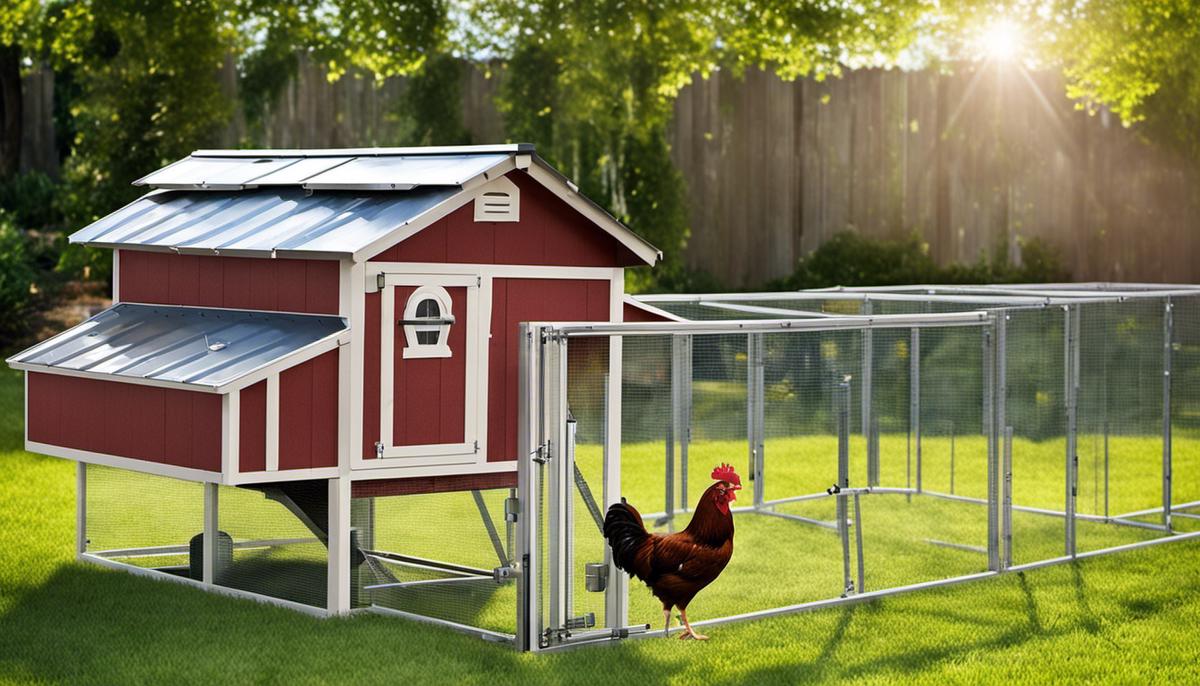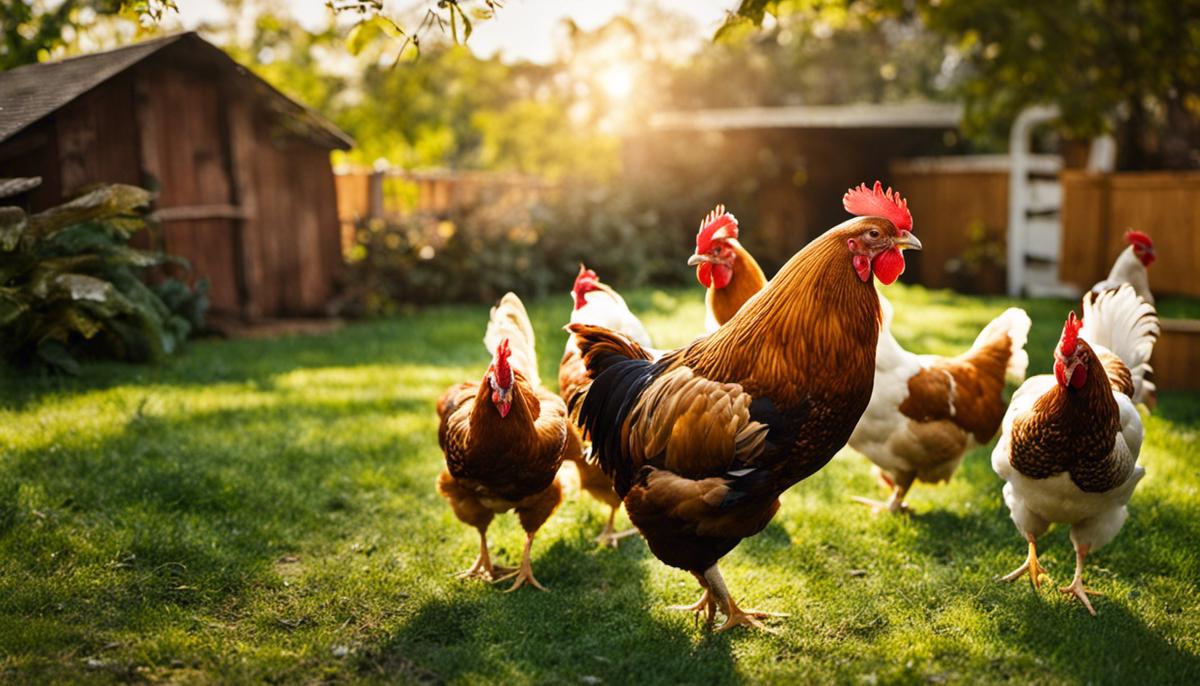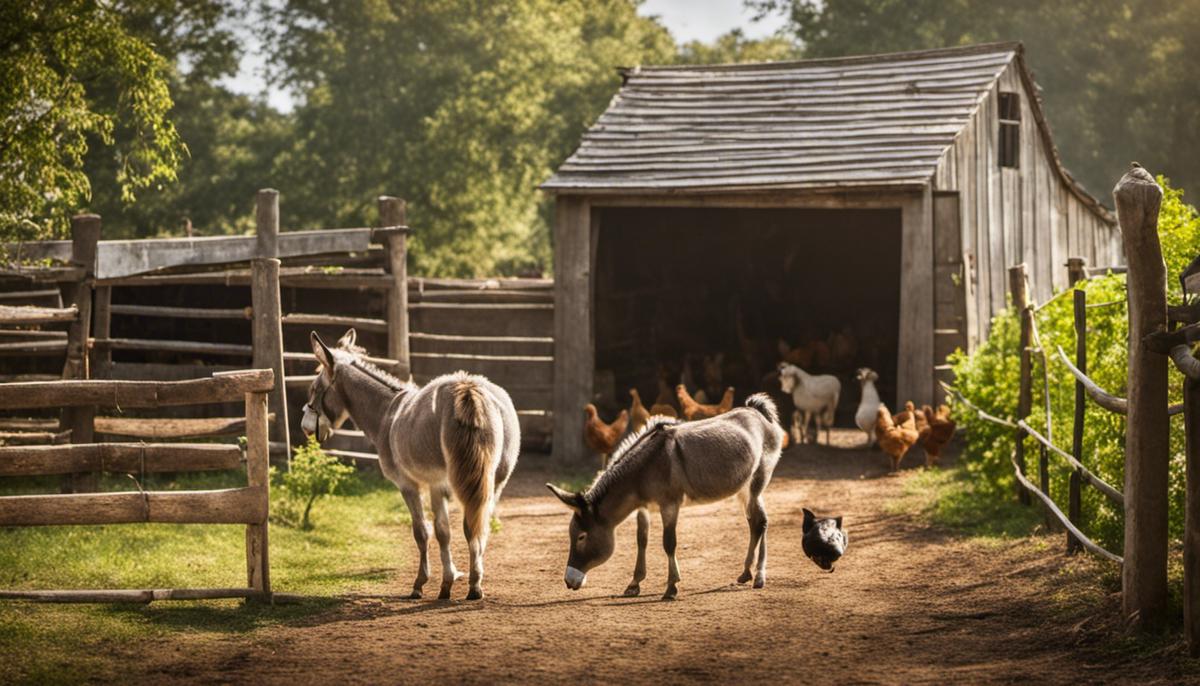Protecting chickens from predators is no small task. Every chicken keeper wants a healthy, thriving flock and to achieve that, it’s crucial to become well-informed about the predators you’re likely to encounter. An important part of this is understanding the behaviors, habits, and signs of common predators like foxes, raccoons, hawks, and owls.
However, recognizing a predator is only the first step. It’s then essential to create a secure environment for your chickens, which includes designing a predator-proof coop and run, and using tools and resources to help bolster the safety of your flock. This involves considering the ideal design and material for the coop and fencing and incorporating protective features such as buried fencing and secure latches. Lastly, understanding your chickens’ behavior, keeping them healthy, and using guard animals or technology will further strengthen the security of your flock.
We will receive a commission if you purchase through our affiliate link at no extra cost to you. Please read our disclosure policy for more information.

Recognize common predators
Identifying Foxes As Predators
Foxes, especially red and gray foxes, are notorious chicken predators. They’re often active at dusk and dawn, but can hunt at any time of day or night. Signs of their presence can include footprints, which have narrow oval shapes with four toes and a distinct “X” in the middle, and their droppings, which are similar to those of a small dog and may contain feathers or fur. If you notice your chickens are suddenly going missing with no signs of a struggle and you can see neatly dug holes under the fence of your chicken coop, you most likely have a fox problem.
Dealing with Raccoons
Raccoons pose a significant threat due to their agility and cunning. They have dexterous hands, enabling them to open latches, climb, and dig. Raccoons leave behind footprints, with five toes on both their hands and feet, making their tracks easy to distinguish. A telltale sign of raccoon predation is chickens missing head or neck, eggs with large holes chewed in the center, or signs of a struggle with feathers spread out around the coop.
Hawks and their Hunting Patterns
Hawks are effective predators that hunt during the day, especially in the early morning and mid-afternoon. They swoop down from above to snatch chickens, often leaving little trace of their presence other than a pile of feathers. The most effective way to identify a hawk problem is by visually spotting them. They’re often seen circling high in the sky or perched on branches or telephone poles.
Recognizing Owl Attacks
Owls are nocturnal predators that pose threats to chickens. They tend to strike at night when chickens are most vulnerable. You can identify owls through their droppings, which consist of sizable boluses or pellets containing the undigested parts of their prey. If you find these around your property or notice chickens mysteriously disappearing overnight, owls may be the culprit.
Understanding Hunting Patterns of Predators
Not all predators attack at the same time or in the same way. Foxes, for example, could come out at any time, but usually prefer dusk and dawn. Raccoons are generally active at night but could do damage at any time, while hawks are daytime hunters. Understanding these patterns can help you choose the effective protective measures based on the type of predator, their behavior, and hunting patterns.
Remember to always remain vigilant as changing seasons, availability of food, and local disturbances can alter the usual behavior of predators. Constant assessment and potential adjustments on your coop’s security measures are key to protecting your chickens from predators.

Building a predator-proof coop and run
Chicken Coop Design and Materials
Chickens are prey animals, so they need a secure environment to keep them safe from predators. The chicken coop should ideally be elevated off the ground to protect the chickens from ground-dwelling predators. Use strong durable materials like wood or metal to construct the coop. For the flooring, select a material that can be easily cleaned, such as vinyl or linoleum, to maintain hygiene and deter pests.
Securing Chicken Coop and Fencing
In addition to a sturdy coop, you’ll also need secure fencing for your chicken run. The run gives your chickens space to roam around safely during the day. The fence should be at least six feet high to prevent predators from jumping over it. Predators such as foxes or raccoons are known to dig under fences, to prevent this, bury your fencing about a foot into the ground.
For an added level of security, place a roof or cover over the top of your run to prevent flying predators like hawks or owls from swooping down.
Incorporating Protective Features
To secure the chicken coop and run, use heavy-duty locks or latches. Predators can be surprisingly clever, so using predatory-proof latches will prevent easy access. Additionally, incorporating a secondary internal door or ‘pop-hole’ shut at dusk and reopen at dawn will provide an extra layer of security.
Coop windows should be barred with hardware cloth, which is stronger than chicken wire and will prevent predators from reaching inside the coop.
Lighting for Visibility
At night, adequate lighting is important for keeping an eye on your chickens and scaring away potential predators. Add a motion-detecting light outside the chicken coop and run. When the light detects movement, it will switch on and illuminate the area, potentially scaring off curious predators before they get too close.
However, avoid shining lights directly into the coop. Chickens need a dark place to sleep and rest, so keep the light only for your run and the surrounding area. Solar powered lights are an eco-friendly and energy saving option to consider.
By following these guidelines, you’ll create a secure environment by protecting your chickens from predators and in turn, ensuring a healthy and stress-free environment for your flock.

Chicken behavior and health observance
Understanding Chicken Behavior
Chickens, like most animals, have the instinctive ability to express signs of distress when predators are imminent. Their behaviors drastically change as they transition from their normal daily activities, like pecking and roosting, to a total panic mode. They might cease laying eggs, stop making sounds, and display unusually agitated or nervous behaviors. Some chickens take a defensive stance by flapping wings, making alert calls, or even attempting to hide. This abrupt alteration in behavior is a crucial signaling system that your flock is under threat. It’s essential to pay close attention to these cues to promptly interpret potential danger.
Identifying Signs of Distress in Your Flock
Depending on the gravity of the situation, chickens may exhibit a variety of signs when they feel threatened. A sudden loud and continuous clucking might be the first alarm bell; think of this as an emergency siren. They may run around wildly, looking for places to escape, or cluster together with heads darting anxiously. Some may even squawk in panic or fly around in an attempt to escape. Keep an eye out for unusually quiet chickens – this can be a sign of fear and stress prompted by the presence of a predator. Recognizing such signs on time would enable you to provide immediate protection to your flock.
Checking Chickens Regularly to Maintain Health
An integral part of keeping your flock safe from predators includes routinely checking their health. Predators, especially opportunistic ones, are attracted to weak or injured chickens, which are easy targets. Conduct regular inspections to look for signs of disease or injury, such as limping, lethargy, decreases in appetite, or changes in egg production. By understanding what’s normal for your hens, you can quickly spot when something is off. Maintaining the flock’s health will not only keep them happy but also less appealing to predators. Implement a healthcare routine including vaccinations, adequate diet, and regular deworming as a preventive measure against attracting predators.
Thwarting Predator Attraction
A sick or injured chicken stands out and can attract unwanted attention from predators. If a chicken is unhealthy, it’s crucial to separate it from the flock until it recovers; otherwise, the entire flock becomes a target. Consider constructing a separate, secure area where infirm chickens can recuperate without endangering others. This method can prevent a problematic situation from escalating and keep your flock safe from both diseases and potential predation.

Using guard animals and technology
Using Livestock Guards
Donkeys and dogs, particularly certain breeds like the Great Pyrenees or Anatolian Shepherd, can be a good way to protect your chickens from predators. These animals are naturally protective and can ward off any potential threats. For this to be effective, you’ll need to ensure the donkeys or dogs are trained and accustomed to the chickens, so they see them as part of their herd or pack to protect. Raising them together from a young age usually works best.
Motion Sensor Lights
Motion sensor lights can be a great deterrent because most predators like foxes, raccoons, and coyotes prefer to operate in the dark. Position several around your chicken coop and run, ensuring each area is well-lit when the motion sensors are triggered. Keep in mind that although these lights can be effective, certain animals may become accustomed to them over time, so it’s essential to have other measures in place as well.
Another well used product is the Solar Nite Eyes, this product introduces a set of flashing red lights that will make a predator think it’s being watched by another set of “eyes.” This disruption to their ideal attack setting will cause them to hesitate and flee to an area where they feel less threatened.
Electric Fencing
Electric fencing can ward off larger predators like coyotes or raccoons. It adds another layer to your coop’s defense, physically deterring any animal that considers venturing too close. The fence should go around the perimeter of your chicken’s roaming area. Always ensure the fence is in good working order, so regular checks are vital. Also, be aware of any local regulations regarding such fences.
Starkline Electric Poultry Netting Kit – This innovative easy-fence system provides a hassle-free solution for protecting all types of poultry. No need to deal with complicated wiring, insulators, or posts. It is the ideal solution for both permanent and temporary enclosures. This all-in-one kit comes with everything you need to set up your fence quickly and easily:
Technological Deterrents
Aside from traditional methods, many technological solutions can help protect your chickens. Devices that make a noise when a predator is detected can scare them off. Equipment like automatic door closers can ensure your chickens are securely locked in their coop every night. Installing a coop camera can give you the upper hand in spotting and identifying predators, too.
Deterring Birds of Prey
Predators such as hawks and owls require a different approach. Aviary netting over outdoor areas where your chickens roam during the day can offer them protection. Alternatively, consider constructing a secure outdoor run with a covered top.
Remember, each layer of protection you add increases the security of your flock. Monitor the effectiveness of each method and adapt as needed to keep your chickens safe.

The safety and wellbeing of your chicken flock is paramount. It’s not only about recognizing common predators but also understanding their habits, developing a secure living environment for your chickens, and regularly monitoring the chickens’ behavior and health status. Furthermore, the use of certain animals such as dogs and donkeys can act as additional security for your flock, deterring predators from approaching. The integration of technology, such as motion sensor lights and electric fences, can provide yet another layer of protection for your birds. Remember, the goal is not to scare away the predators, but to make your chicken farm an unattractive hunting ground, ensuring the longevity, health, and productivity of your flock.
Make sure you have all the essential tools for raising a successful flock- learn more –
10 Essential Tools Every Chicken Owner Should Have
Make sure to check out my ultimate guide to raising chickens.
Your Ultimate Guide to Raising Chickens Successfully






